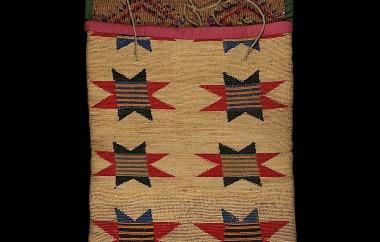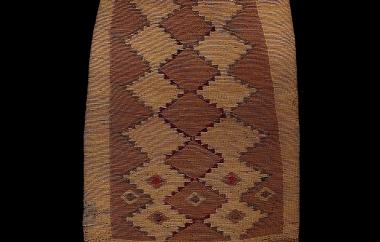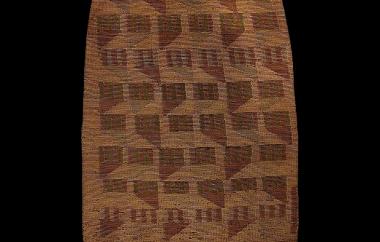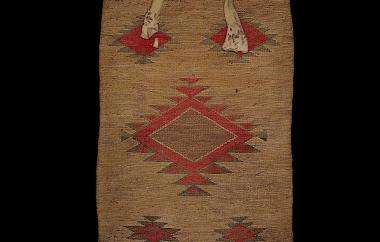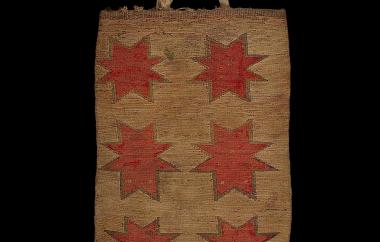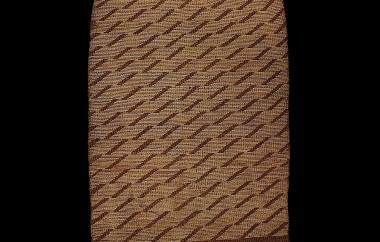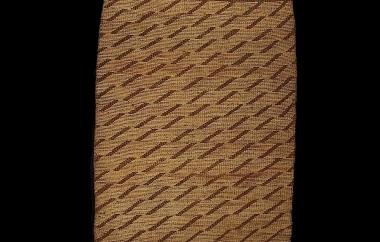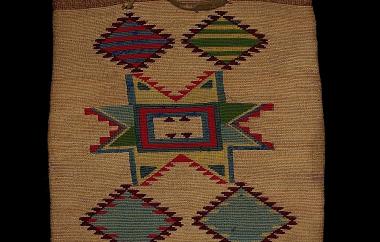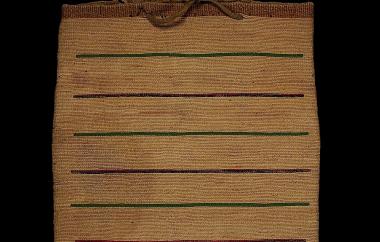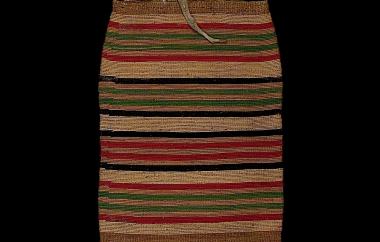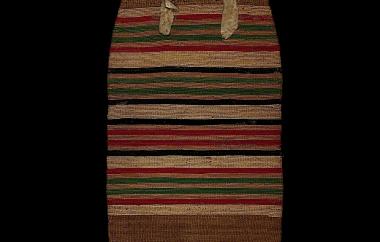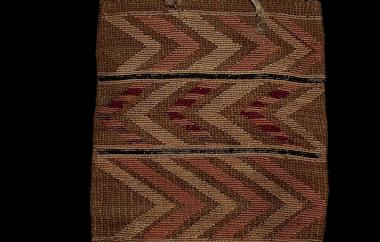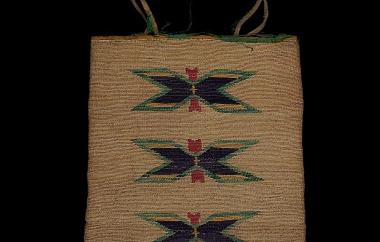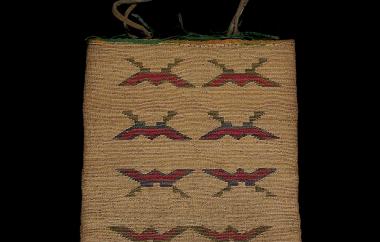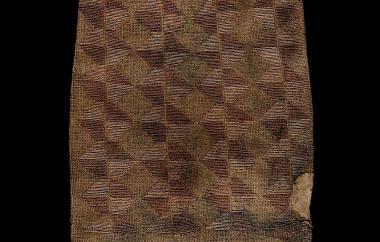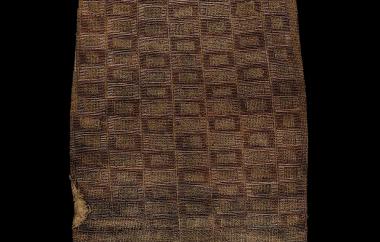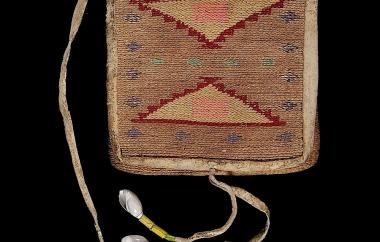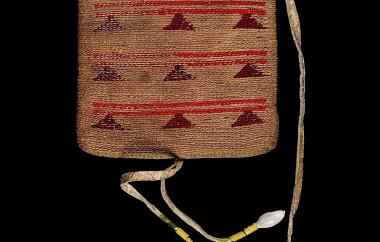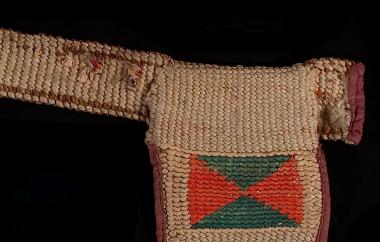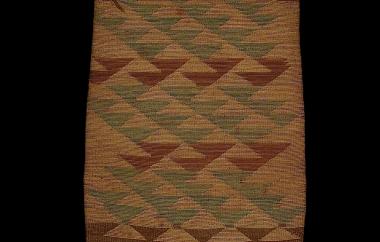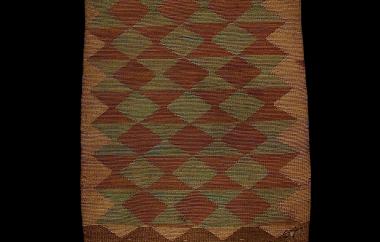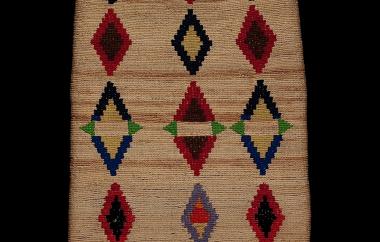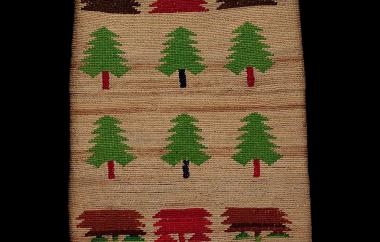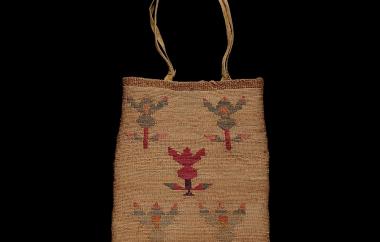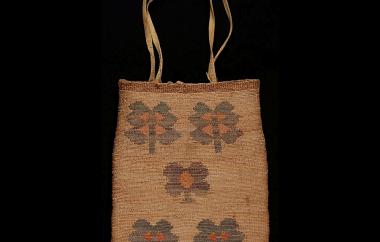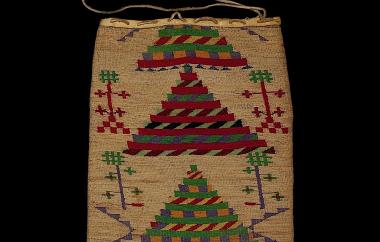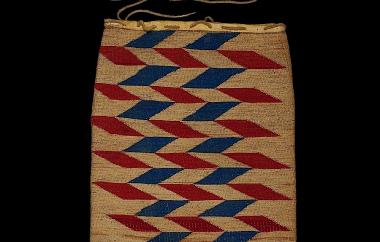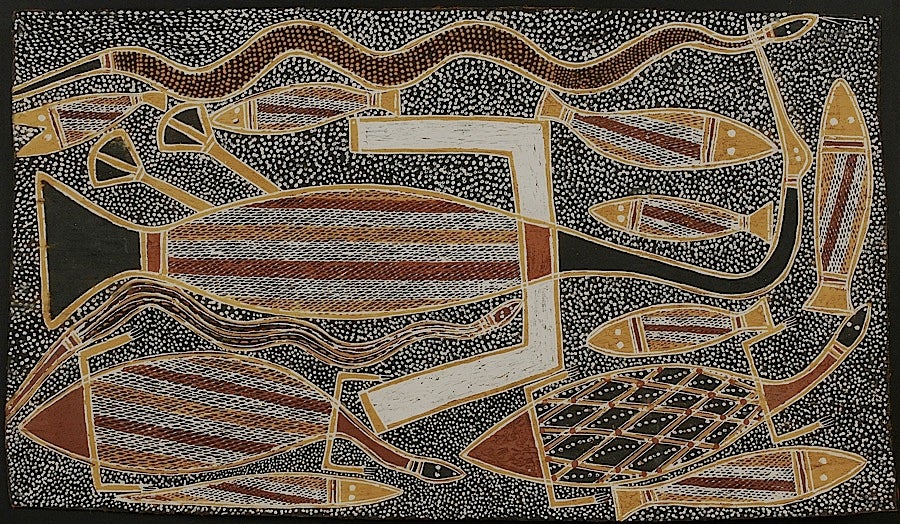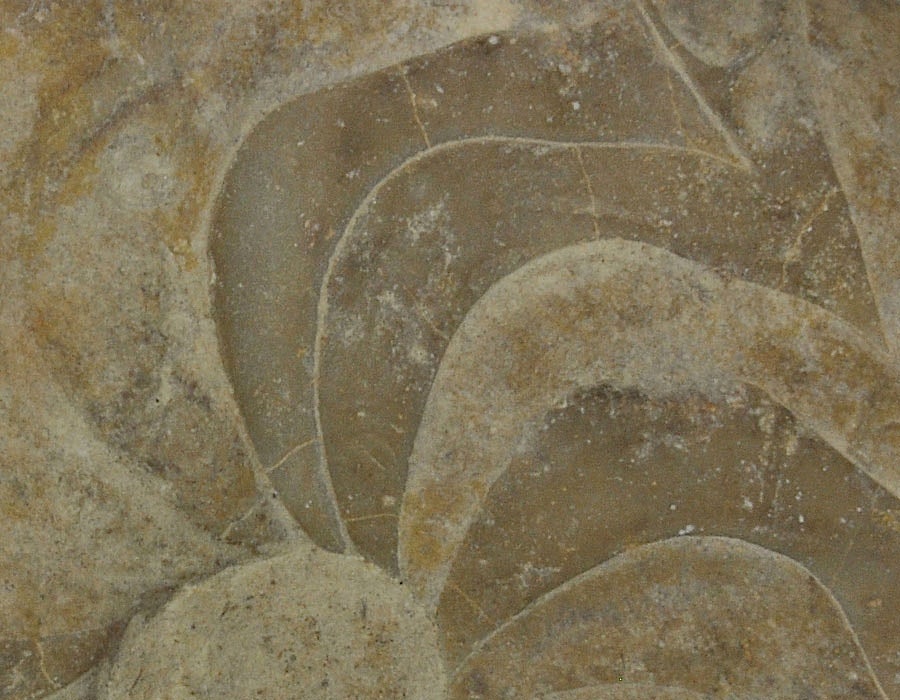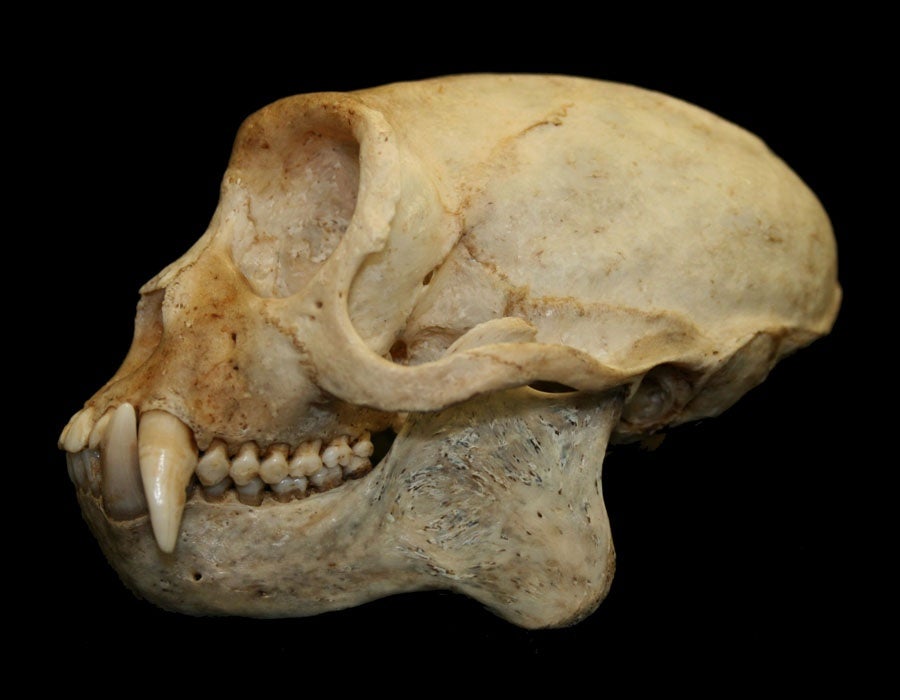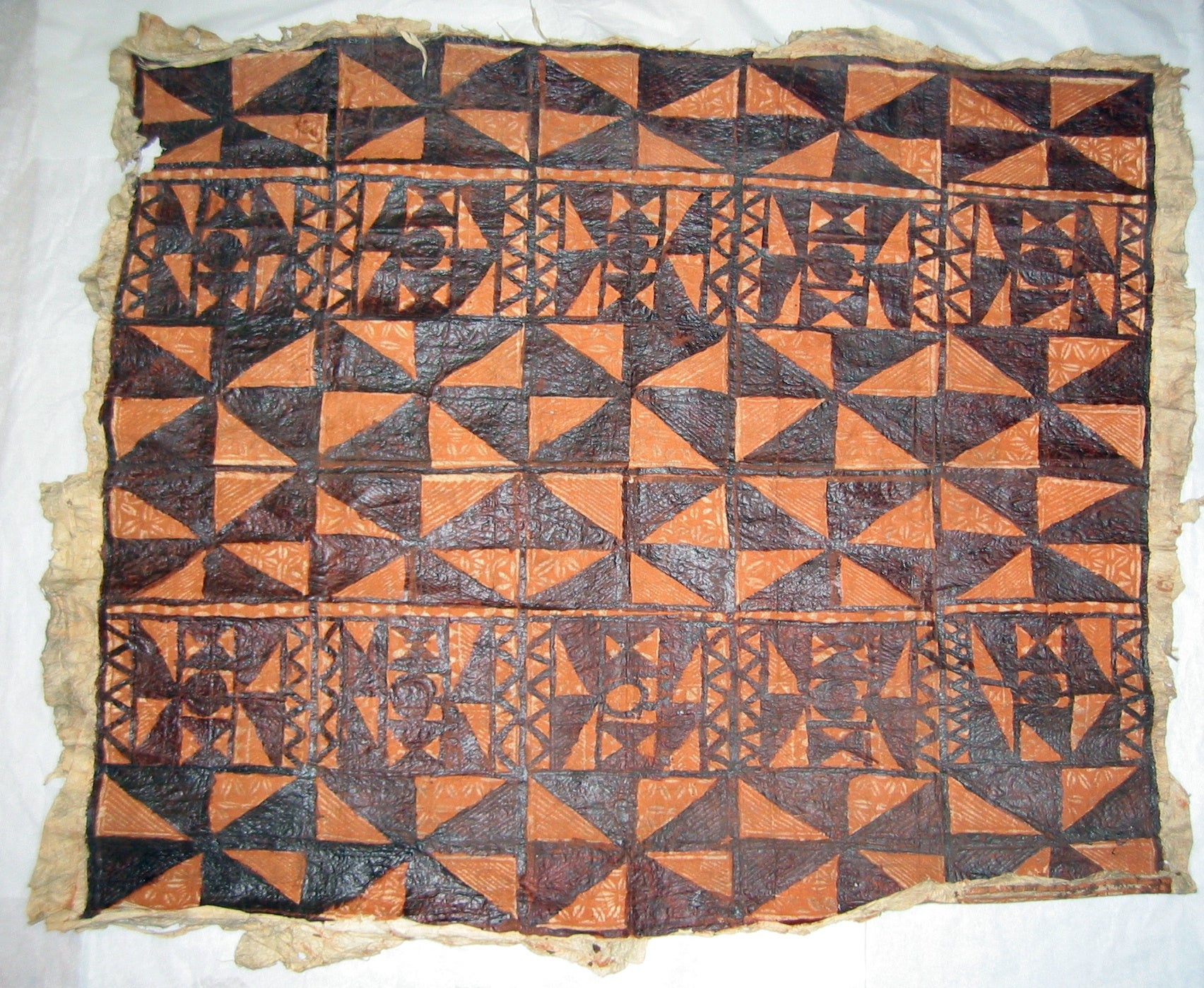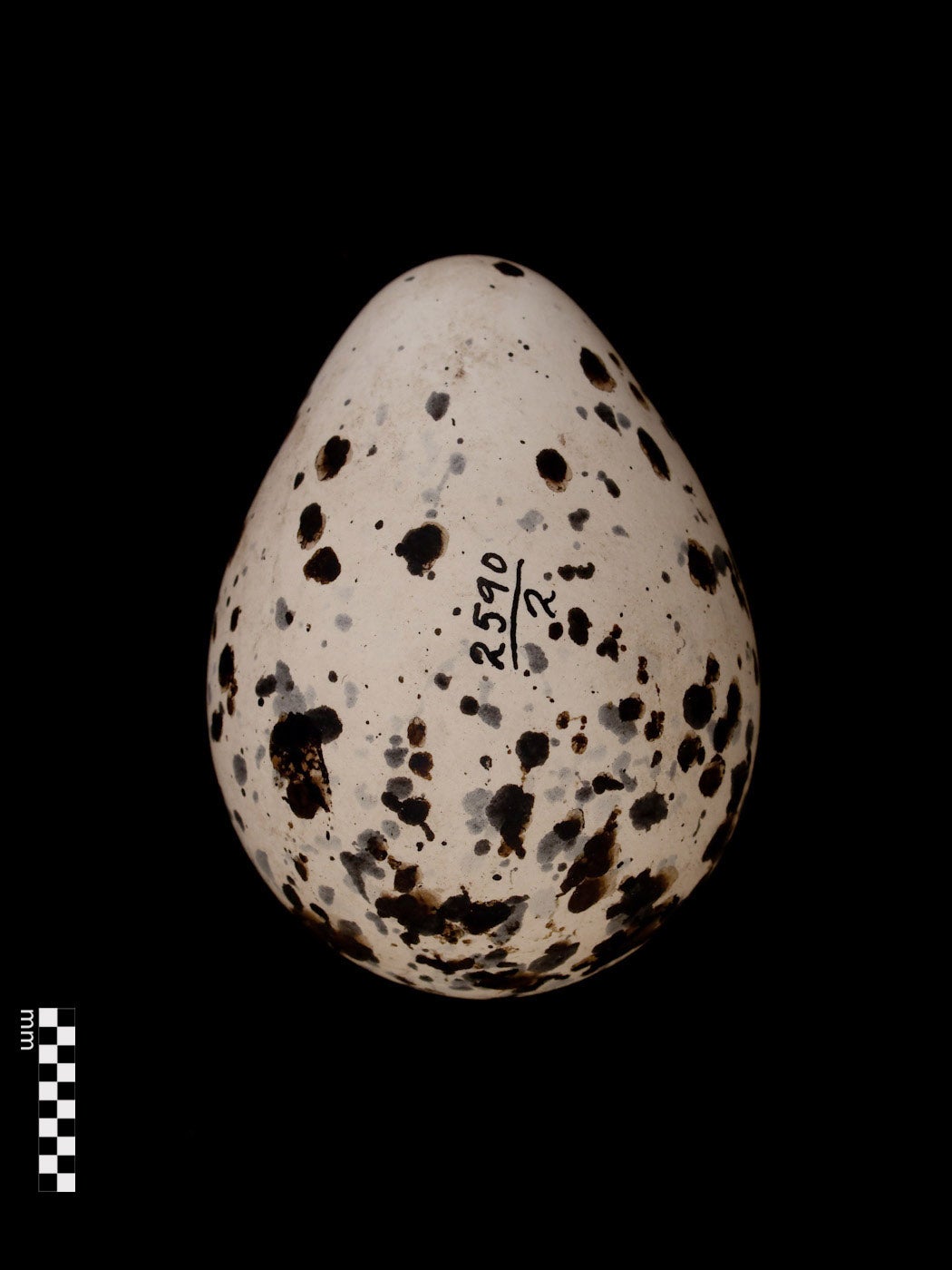Seasonal moves to river fishing camps, root gathering fields, mountain berry patches, and winter villages present the problem of transporting and storing food and personal belongings. On the Columbia Plateau, soft twined bags were essential for native peoples like the Nez Perce, Yakama, Umatilla, and others. Because of the labor and skill involved in their construction and design, and the beauty of the finished pieces, these baskets were prized possessions, passed on from tribe to tribe, family to family, and from one generation to the next.
Usually twined from the peeled, cured, and hand spun fibers of dogbane or silkweed (Apocynum cannabinum), the bags were decorated with contrasting-colored plant fibers. As Euroamericans began to settle in the region, new materials became available. As early as the 1830s, husks of corn were used as decorative overlay, and worsted wool yarn was probably introduced in the 1880s, along with aniline dyes to expand the available range of colors. Smaller purses were added to the repertoire.
Shown here is a sample of “cornhusk” bags from the museum collections. Both sides are included to show their contrasting designs. Images © UO Museum of Natural and Cultural History. Production of this gallery received generous funding from The Ford Family Foundation.
Cat. #1-12044
Cornhusk bag with flap closure (side two)
Dogbane and twine foundation, cornhusk and yarn overlay, cloth trim
Nez Perce?
Cat. #1-12044
Cornhusk bag with flap closure (side one)
18” x 12-1/2” (open)
Nez Perce?
Cat. #1-12680
Cornhusk Bag (side one) 23” x 16”
Umatilla
Cat. #1-12680
Cornhusk Bag (side two)
Dogbane foundation, cornhusk and yarn overlay, leather drawstring
Umatilla
Cat. #1-12703
Cornhusk bag (side one) 14-1/2” x 10”
Nez Perce?
Cat. #1-12703
Cornhusk bag (side two)
Dogbane foundation, cornhusk and yarn overlay, cloth trim, leather handle
Nez Perce?
Cat. #1-12705
Early style cornhusk bag (side one) 25” x 16”
Cayuse
Cat. #1-12705
Early style cornhusk bag (side two)
Dogbane foundation and drawstring, cornhusk overlay
Cayuse
Cat. #1-12707
Cornhusk bag (side one)
Eight-point star and stepped geometric designs, 12-1/2” x 12”
Cayuse
Cat. #1-12707
Cornhusk bag (side two)
Dogbane foundation, cornhusk and yarn overlay, leather pull-through handle
Cayuse
Cat. #1-12722
Cornhusk bag (side one), 20-1/2” x 13-1/2”
Cayuse
Cat. #1-12722
Cornhusk bag (side two)
Dogbane foundation, cornhusk and yarn overlay, single leather handle replaces former drawstring
Cayuse
Cat. #1-12726
Cornhusk bag with exposed dogbane foundation (side one)
12” x 10”
Cat. #1-12726
Cornhusk bag with exposed dogbane foundation (side two)
Dogbane, cornhusk and yarn overlay, leather handle
Cat. #2-464
Cornhusk bag (side one), 11-1/2” x 10”
Yakama?
Cat. #2-464
Cornhusk bag (side two)
Dogbane and cotton twine foundation, cornhusk overlay, silk lining, double leather handle
Yakama?
Cat. #2-746
Early style cornhusk bag (side one), 24” x 18”
Wishram
Cat. #2-746
Early style cornhusk bag (side two)
Dogbane foundation, cornhusk overlay, leather patches, holes remain from former drawstring
Wishram
Cat. #2-1239
Cornhusk wallet (side one), 5” x 5” (closed)
Nez Perce?
Cat. #2-1239
Cornhusk wallet (side two)
Dogbane and cotton twine foundation, cornhusk and yarn overlay, leather trim and handle, cloth lining
Leather tie with glass trade beads and Olivella shells
Cat. #2-1343
Cornhusk pouch belt (side one), 25-1/2” long
Bannock
Cat. #2-1343
Cornhusk pouch belt (side two)
Jute and twine foundation, cornhusk overlay, cloth edge
Bannock
Cat. #2-3103
Early style cornhusk bag (side one)
Purchased from Wapato John, 1899
25” x 18-1/2”
Chelan
Cat. #2-3103
Early style cornhusk bag (side two)
Dogbane foundation, cornhusk overlay, edge whip-stitched with leather thong
Chelan
Cat.# 2-18409
Later-style cornhusk bag with representational designs (side one)
11" x 9-1/2"
Cat.# 2-18409
Later-style cornhusk bag with representational designs (side two)
11" x 9-1/2"
Cat.# 2-18410
Later-style cornhusk bag with representational designs (side one)
10-1/2" x 8-1/2"
Cat.# 2-18410
Later-style cornhusk bag with representational designs (side two), stylized tree or flower-like motifs in dyed cornhusk or raffia
Cat. #22-2613
Later style cornhusk bag with representational designs (side one)
17” x 13”
Cat. #1-12044
Later style cornhusk bag with representational designs (side two)
Dogbane and twine foundation, cornhusk and yarn overlay, cloth trim
Nez Perce


